Diagnosis and Treatment of Throat (Laryngeal) Cancer
Laryngeal cancer is an oncological disease characterized by hoarseness, difficulty breathing and swallowing, and loss of smell. This condition makes it difficult to communicate, eat, and perform daily activities. Early diagnosis and appropriate treatment can help preserve the voice and control the tumor in complex clinical cases. Let's look at how throat cancer develops and the available diagnostic and treatment methods.

specialists

equipment

treatment

Epidemiology and prevalence
Laryngeal cancer is one of the leading malignant tumors of the head and neck. According to statistics, it accounts for approximately 3% of all oncological cases and up to 20-25% of ENT tumors. The disease most often develops in men over 55 years of age. The highest incidence is observed in Eastern Europe, South and Central Asia, and Latin America. In Russia, more than 8,000-9,000 new cases are diagnosed annually.

Causes and risk factors
The disease develops due to the following factors:
- Smoking - increases the risk of developing the disease by 20 times
- Alcohol abuse - when combined with nicotine, increases the risk of cancer by 90%
- Human papillomavirus infection - in 70% of patients, throat cancer is associated with HPV
- Occupational carcinogens - exposure to asbestos, acids, formaldehyde, sulfuric acid, toxic fumes emitted by rubber tires
- Chronic inflammation - laryngitis, gastroesophageal reflux, vocal cord nodules irritate the laryngeal mucosa
- Heredity - a history of head and neck cancer in close relatives
Factors that increase the risk of throat cancer include passive smoking, age over 55, weakened immune system, excess weight, and gastrointestinal diseases. The risk of throat cancer increases with excessive consumption of red meat combined with a diet deficient in vitamins and minerals.

Classification and staging of laryngeal cancer
Throat cancer is classified by anatomical location into the following types:
- Supraglottic (above-glottic) - Occurs in the upper larynx. It remains asymptomatic for a long time. It quickly spreads to the lymph nodes due to the extensive lymphatic network.
- Glottic (vocal) - Occurs directly on the vocal cords. It is characterized by persistent hoarseness, which facilitates earlier detection. In the early stages, it is often limited to only one side of the larynx.
- Subglottic (subglottic) - Occurs under the vocal cords and spreads toward the trachea. It is often detected at an advanced stage. The lymphatic network is poorly developed, but the tumor can spread to the lower respiratory tract.
According to the international TNM classification of malignant tumors, laryngeal cancer is divided into 5 stages:
- Stage 0: Abnormal cells are found only in the mucous membrane of the larynx; the tumor has not spread deeper.
- Stage 1: A small tumor, limited to one anatomical section of the larynx, with no signs of metastasis.
- Stage 2: A large tumor, affecting surrounding structures.
- Stage 3: Metastases appear in one regional lymph node (up to 3 cm), and infiltration of adjacent tissues is possible.
- Stage 4: The tumor grows into the thyroid cartilage, muscles, and soft tissues of the neck.
The prognosis and treatment options depend on the stage of the disease. In the early stages, throat cancer responds well to treatment, preserving voice and breathing function. However, in later stages, the tumor grows into surrounding tissue, significantly complicating treatment.

Symptoms and Clinical Presentation
Throat cancer causes:
- A scratchy, dry throat, and a feeling of a foreign body in the throat are often perceived as symptoms of pharyngitis or a cold.
- Bad breath is caused by the breakdown of tumor tissue in the later stages.
- General deterioration of condition: fatigue, weight loss, loss of appetite as the disease progresses.
- Pain when swallowing: the growing tumor compresses surrounding tissue and irritates nerve endings.
- Loss of voice: occurs with bilateral damage to the vocal cords or significant limitation.
- Shortness of breath, wheezing: occurs due to narrowing of the larynx.
A progressive process is characterized by pain at rest or when talking. Coughing up blood, complete loss of voice.
Diagnostic methods
Comprehensive diagnostics for laryngeal cancer includes three main components: laboratory tests, imaging techniques, and mandatory histological confirmation of the diagnosis.
Laboratory diagnostics
Laboratory tests are necessary to assess the patient's general condition and identify concomitant infections. The examination includes:
- Complete blood count and biochemistry panel — detect anemia, inflammation, and liver and kidney dysfunction.
- C-reactive protein and ESR — reveal nonspecific signs of inflammation.
- Tumor markers such as SCC, CYFRA 21-1, and CEA help determine the stage of the disease, assess tumor progression, and the risk of recurrence.
- Human papillomavirus tests — HPV types 16 and 18 have a high oncogenic risk.
Laboratory test results indicate the body's readiness for treatment and whether additional testing is needed.
Instrumental diagnostics
Instrumental methods are used to assess the size and spread of the tumor. These include:
- Laryngoscopy with biopsy
- CT
- MRI
- Positron emission tomography
- Ultrasound of the neck and lymph nodes
Each of these methods complements the others: endoscopy allows for a detailed examination of the tumor, CT and MRI assess its depth and spread, and PET-CT detects metastases. Ultrasound is performed to check the condition of the cervical lymph nodes.
Histological examination
Histological examination is required to assess the cellular structure and degree of malignancy of a tumor. A tissue sample obtained during laryngoscopy is sent to a laboratory, fixed, stained with special dyes, and examined under a microscope.
Important! If a definitive diagnosis cannot be made, immunohistochemistry is performed. Doctors identify specific proteins characteristic of different tumor types.
Treatment methods
When choosing a treatment plan, the tumor's location, size, stage, and presence of metastases are taken into account. For maximum effectiveness, doctors often combine several methods.
Surgical intervention
To completely remove the tumor, the following procedures are performed:
- Laryngectomy – partial or complete removal of the larynx
- Glossectomy – for tumors extending to the tongue
- Cervical lymph node dissection – removal of affected lymph nodes
- Reconstructive interventions – tissue restoration, breathing, and swallowing
Rehabilitation lasts 2-4 weeks. Potential risks include infection, bleeding, and swallowing and breathing difficulties.
In some cases, after radical surgery, the surgeon makes an opening in the front of the neck through which a tube (tracheostomy) is inserted to ensure breathing. Air flows directly into the trachea, bypassing the nose and mouth. The tracheostomy protects the airway from dust, water, and infection.
Radiation therapy
A non-surgical method that involves irradiating the tumor with high-energy beams. Treatment is performed in the early stages of cancer, after surgery to eliminate remaining cancer cells, and in cases of relapse.
Radiation therapy preserves the throat and its function, reduces pain, and lowers the risk of tumor recurrence. Side effects include dry mouth, skin burns, and scar tissue formation.
Important! Irradiation is administered 5 times per week. Treatment duration is 3 to 7 weeks.
Chemotherapy
This involves the administration of cytostatic agents to rapidly destroy cancer cells. It is used in combination with radiation therapy for relapses and metastases. It is suitable for systemic disease control. It can affect healthy tissue and cause nausea, loss of appetite, weakness, hair loss, and dry mouth.
“Unlike surgery and radiation therapy, chemotherapy affects tumor cells throughout the body. It slows the progression of cancer, reduces symptoms, and prolongs the patient's life.
Chemotherapy combined with radiation is an alternative for patients for whom surgery is contraindicated. Treatment is carried out strictly according to international clinical protocols, with individualized regimens tailored to the patient's condition. We carefully monitor each stage, promptly assessing the effectiveness and tolerability of the drugs, and adjusting therapy if necessary,” explains Igor Alexandrovich Merkulov, an oncologist at the K+31 Clinic.
Targeted therapy
Targeted drugs act on specific molecules in tumor cells. Unlike chemotherapy, targeted therapy has fewer side effects. These include skin reactions and diarrhea. It is not suitable for everyone; molecular genetic testing of the tumor is required before treatment.
Laryngeal cancer treatment is available in Moscow at the K+31 Clinic. Experienced doctors use state-of-the-art equipment, ensuring high precision and minimal tissue impact.
You can schedule a consultation with a doctor by phone or by filling out the contact form on the website. A clinic administrator will call you back as soon as possible and answer all your questions.
FAQ
Why does the voice change with laryngeal cancer?
The tumor interferes with the normal closure of the vocal cords, disrupting their vibration and mobility. This leads to hoarseness, huskiness, or complete loss of voice.
Can laryngeal cancer develop in a person who has never smoked?
Yes, the disease occurs in nonsmokers. Causes may include HPV, exposure to chemical carcinogens, or a genetic predisposition.
What type of doctor diagnoses and treats throat cancer?
ENT or otolaryngologist, oncologist.
Does stress influence the development of laryngeal cancer?
Stress itself does not cause cancer. It weakens the immune system, affects hormones, and exacerbates unhealthy habits, increasing the risk.
Is it possible to confuse laryngeal cancer with an acute respiratory viral infection?
Yes, in the early stages, both conditions have similar symptoms: a sore throat, hoarseness, and discomfort in the throat. The difference is that with an acute respiratory viral infection, these symptoms resolve within 1-2 weeks. If relief does not occur, it's worth consulting a doctor for an examination.
Can laryngeal cancer metastasize to the lungs?
Yes, it can. In advanced cases, the cancer can metastasize to the lungs, lymph nodes, and liver. This is one reason why it's important to detect the disease early.
What signs indicate possible lymph node metastases?
Lumps, enlargement, or immobility of the lymph nodes in the neck.
Bibliography
- L. V. Bolotina, L. Yu. Vladimirova, N. V. Dengina, S. I. Kutukova, A. V. Novik, I. S. Romanov. Head and Neck Tumors. Journal of Malignant Tumors - 2023.
- S. B. Aliyeva, R. I. Azizyan, A. M. Mudunov, I. A. Zaderenko, N. A. Daikhes, V. Z. Dobrokhotova, E. N. Novozhilova, S. S. Reshulsky, T. N. Borisova, V. V. Vinogradov. Principles of Radiation Therapy for Laryngeal Cancer. Journal of Head and Neck Tumors - 2021.
- M. V. Subbotina, M. I. Pykov. Ultrasound Examination of the Larynx: Experience and Prospects. Kremlin Medicine. Clinical Bulletin — 2024.
- M. I. Sokolova, V. I. Pavlova. Metastatic head and neck cancer without an identified primary: diagnosis and treatment. Avicenna Bulletin — 2025.
- A. L. Kozhanov. Modern aspects of treatment and rehabilitation of patients with laryngeal cancer. Head and Neck Tumors Journal — 2016.

This award is given to clinics with the highest ratings according to user ratings, a large number of requests from this site, and in the absence of critical violations.

This award is given to clinics with the highest ratings according to user ratings. It means that the place is known, loved, and definitely worth visiting.

The ProDoctors portal collected 500 thousand reviews, compiled a rating of doctors based on them and awarded the best. We are proud that our doctors are among those awarded.
Make an appointment at a convenient time on the nearest date
Price
Other services















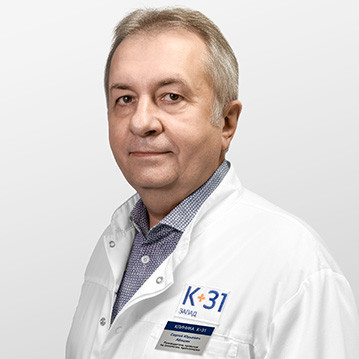




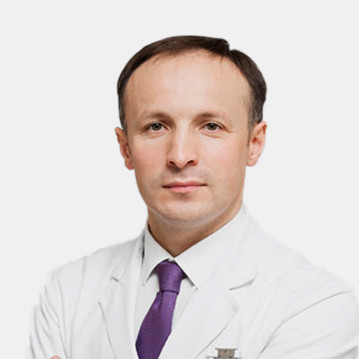











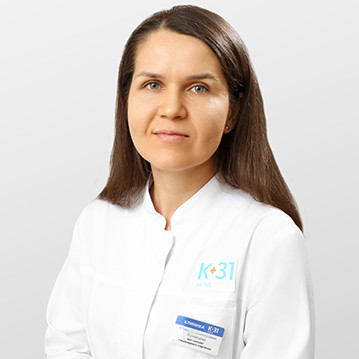
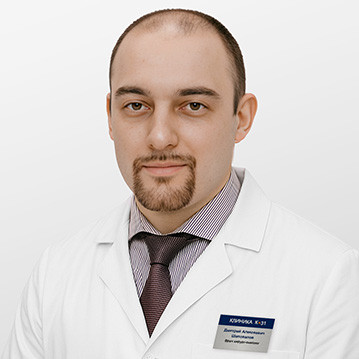

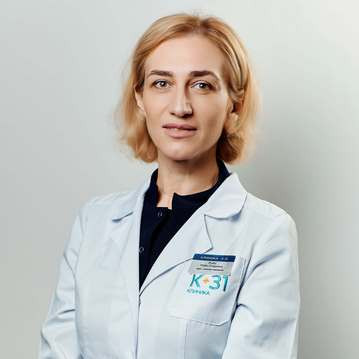
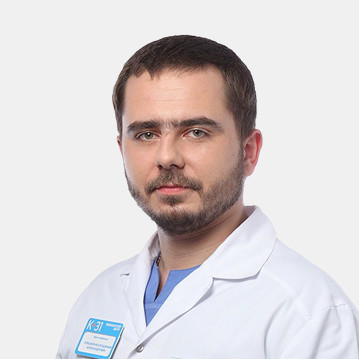







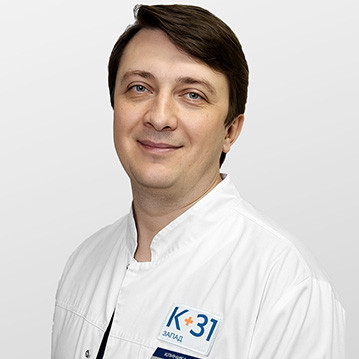

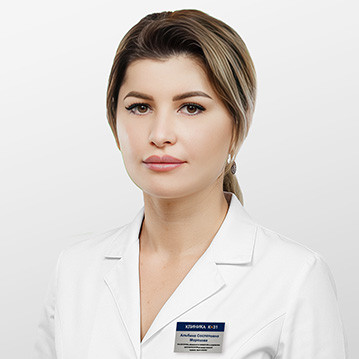

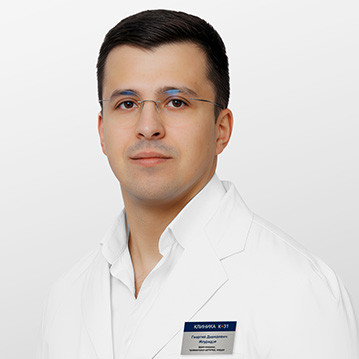

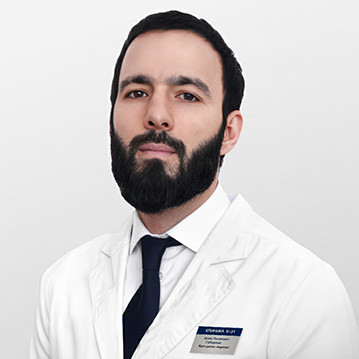







General information about laryngeal cancer
The larynx performs vital functions: it participates in breathing, voice production, and protection of the upper airways. The pathological process begins with epithelial cell atypia and uncontrolled growth. Gradually, the tumor penetrates deep tissues and lymph nodes. If treatment is not started promptly, the risk of metastasis and death increases.